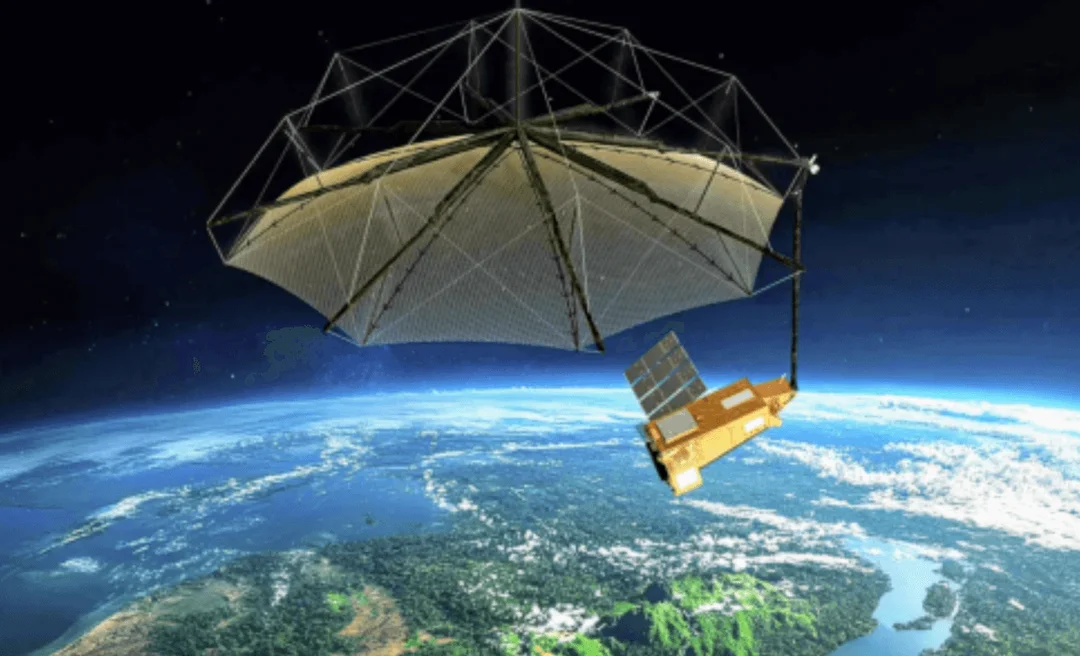
ESA’s Biomass Mission: Unfolding the Secrets of Earth’s Forests and Carbon Cycle
Just weeks after its launch, the European Space Agency's (ESA) Biomass mission has achieved a crucial milestone: the successful deployment of its massive 12-meter diameter antenna. This event marks a pivotal step towards gaining unprecedented insights into the world's forests and their crucial role in the Earth's carbon cycle. The mission aims to "weigh" the world’s 1.5 trillion trees to better understand carbon storage and deforestation impact.
The Biomass mission carries the first P-band synthetic aperture radar in space. This technology enables the satellite to penetrate through dense forest canopies, gathering data on the carbon content within.

Unfurling the 'Space Brolly'
The deployment of the antenna, nicknamed the "space brolly", was a carefully orchestrated process. Stefan Kiryenko of ESA explained that deploying the 7.5-meter supporting boom, as a first step, happened in three stages, timed with optimal ground station coverage. The mesh antenna reflector, as next step, unfolded like an umbrella above the satellite
Michael Fehringer, ESA’s Biomass Project Manager, described the delicate operation: "First, we had to disable the satellite’s attitude and orbit control system so it could ‘float’ freely, avoiding any unwanted torque during the antenna’s deployment. Then, we fired two pyrotechnic devices to release the belt securing the folded antenna."
A New Era in Forest Observation
Scientists believe this mission will revolutionize our understanding of forest biomass, particularly in dense tropical regions like the Amazon, Central Africa, and Southeast Asia. The satellite's P-band radar is uniquely capable of penetrating cloud cover and dense vegetation, providing consistent data year after year – a major advantage over previous satellite technologies.
Professor John Remedios, director of The National Centre for Earth Observation, highlighted the mission's significance: "It would be a major achievement to actually know for the first time with high accuracy how much [carbon] is actually in the Amazon, Congo, Indonesia".
Another major event is the release of ESA’s most extensive satellite-based maps of above-ground forest carbon to date. Spanning nearly two decades (2007-2022), this dataset integrates data from multiple satellite missions to track carbon stocks across the globe. As ESA releases the most extensive satellite-based maps of above-ground forest carbon to date, they leverage the power of multiple Earth-observing satellites, including Envisat, Copernicus Sentinel-1, ALOS PALSAR, and NASA's ICESat and GEDI lidar missions. These new maps will provide better characterization of the states and dynamics of carbon stored in vegetation will be facilitated by ingesting additional satellite data from past missions, and from future satellites.
Challenges Remain
While the Biomass mission promises to significantly improve carbon stock estimates, challenges remain in accurately measuring the most carbon-rich ecosystems. As Professor Richard Lucas of Aberystwyth University noted, "Detecting biomass densities above 400 tons per hectare is considerably more difficult because the relatively short wavelengths of current radar sensors don't fully penetrate or interact with the larger woody components of dense tropical forests."
What's Next?
With the antenna successfully deployed, the Biomass mission will now undergo a commissioning phase lasting around six months. Scientists anticipate the first maps to be produced within six months, and will continue to gather data for the next five years. These annual maps will not only show how much carbon is stored but how much is being lost through deforestation; however, the real data provided by Biomass will hopefully reduce uncertainties in the global carbon cycle and its contribution to climate change.
What are your thoughts on the potential impact of the Biomass mission? Do you believe this technology can effectively monitor deforestation and contribute to climate change mitigation? Share your perspective in the comments below.